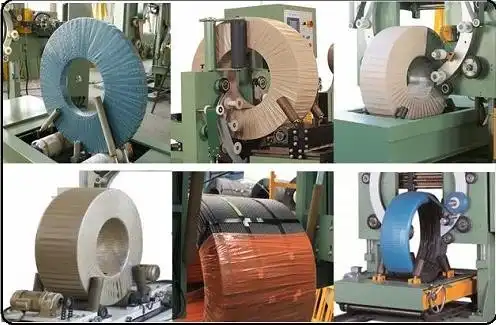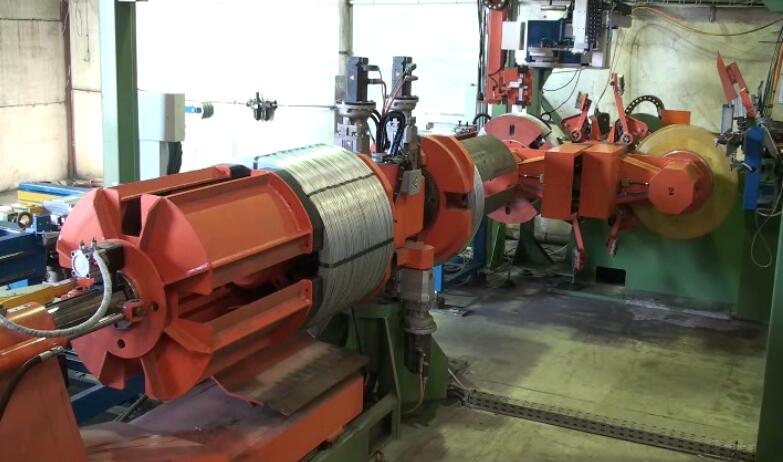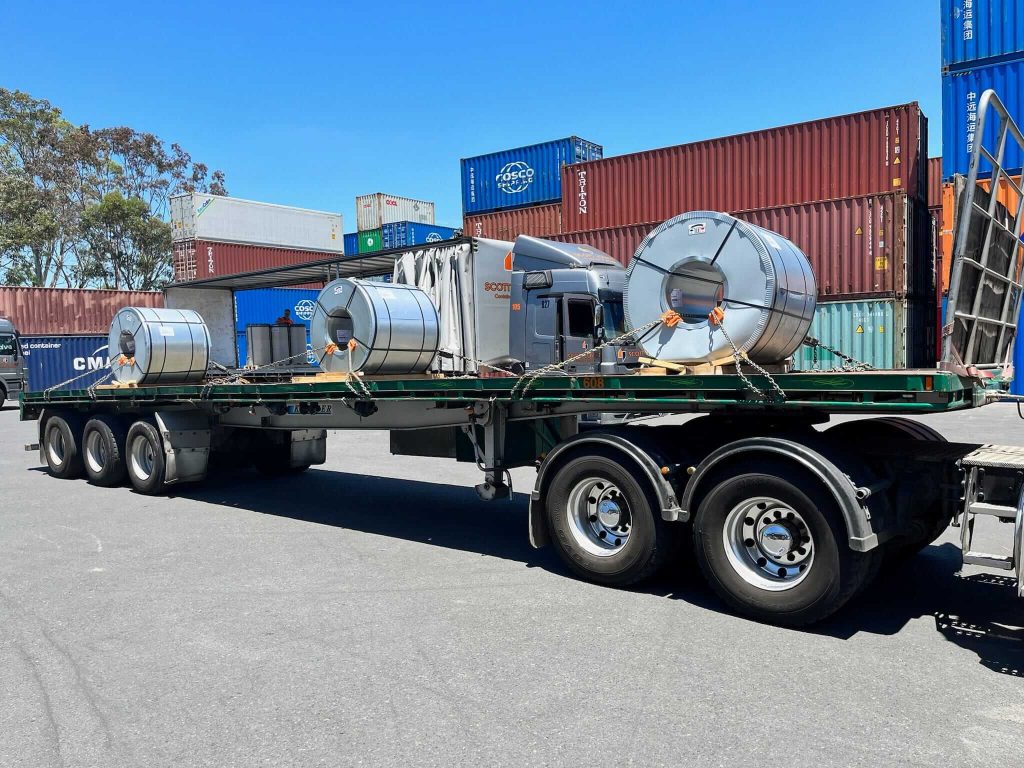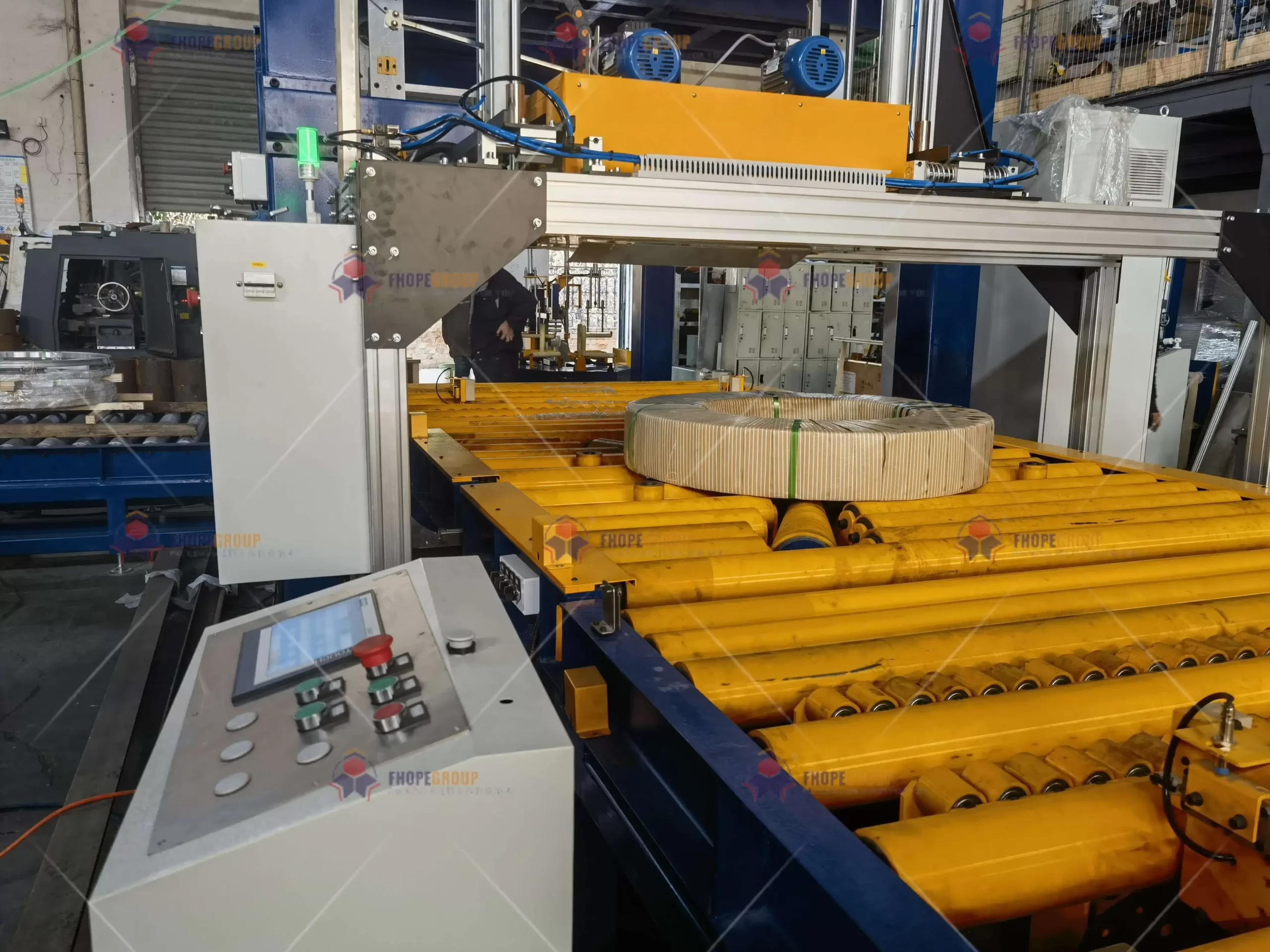The Advantages of Automated Coil Wrapping for Manufacturing Lines
Is your manufacturing line held back by inefficient, labor-intensive coil packaging? Problem: Manual wrapping methods are slow, inconsistent, and leave valuable coils vulnerable to damage and rust. Agitate: This bottleneck directly impacts throughput, product quality, and profitability. Solution: Implementing automated coil wrapping unlocks significant operational advantages, addressing these challenges head-on.
Automated coil wrapping dramatically boosts manufacturing line efficiency by increasing throughput, reducing labor costs, and ensuring consistent, high-quality packaging. It minimizes product damage during transit and storage, enhances safety, and provides flexibility for different coil sizes and materials. This strategic investment streamlines operations and protects asset value from the factory floor to the end customer.
Moving from manual processes to automation in coil packaging isn’t just an upgrade; it’s a transformation. It’s about securing product integrity, optimizing resource allocation, and positioning your operations for future growth. Let’s delve into the specific advantages that automated coil wrapping brings to modern manufacturing lines.
Increased Throughput and Efficiency
Are you watching your production slow down at the packaging stage? Manual coil wrapping is a recognized bottleneck in many manufacturing operations, unable to keep pace with high-speed production lines.
Automated coil packing lines utilize high-speed machinery and material handling systems to significantly accelerate the packaging process, leading to shorter cycle times and higher overall output rates. This automation drastically reduces the need for manual labor, freeing up personnel for other critical tasks and ensuring continuous operation with minimal downtime, thereby maximizing equipment and resource utilization.

Accelerating Production Cycles
Automated coil wrapping systems are engineered for speed and consistency, far exceeding the capabilities of manual methods. By automating critical steps like film application, tensioning, cutting, and sealing, these lines can process coils rapidly and without fatigue. This inherent speed increase directly translates into higher throughput for the entire manufacturing line. Imagine processing dozens more coils per shift, eliminating bottlenecks and improving overall production flow. The precision of automated systems ensures that each coil is wrapped identically, reducing the need for rework or adjustments that plague manual operations. Furthermore, automated lines are designed for continuous operation, minimizing downtime for changeovers or breaks. Integration with upstream and downstream processes is seamless, allowing for a steady, uninterrupted flow of products. This not only boosts current output but also provides the capacity needed to scale operations as demand increases.
The reduction in manual labor is another pivotal aspect of efficiency. Tasks that were once physically demanding and time-consuming for multiple workers are handled automatically by the machine. This reallocation of human resources to roles requiring judgment, oversight, and maintenance optimizes workforce utilization and contributes to a more productive operational environment. The consistency of automated application also means less material waste compared to manual methods, where operators might use excess film or apply it unevenly. This material optimization further contributes to cost efficiency and operational sustainability.
Consider the impact on total cycle time. From the moment a finished coil reaches the packaging station to when it’s ready for storage or shipment, an automated line drastically cuts down the duration. This accelerated cycle time improves inventory turnover and shortens lead times for customers, providing a competitive edge. The reliability of automated systems also means fewer interruptions due to human error or fatigue, leading to a more predictable and stable production schedule.
| Feature | Manual Coil Wrapping | Automated Coil Wrapping | Advantage of Automation |
|---|---|---|---|
| Throughput Rate | Low to Medium, inconsistent | High, consistent | Significantly higher output, predictable workflow |
| Labor Requirement | High, physically demanding | Low, supervisory/maintenance focus | Reduced labor costs, better resource allocation |
| Speed | Slow | Fast | Shorter cycle times, increased capacity |
| Consistency | Varies by operator | Highly consistent | Uniform package quality, reduced rework |
| Downtime | Frequent (breaks, fatigue) | Minimal (scheduled maintenance) | Continuous operation, higher OEE (Overall Equipment Effectiveness) |
| Material Use | Variable, potential waste | Optimized, minimal waste | Lower material costs, sustainability |
Enhanced Product Protection and Quality
Is your finished steel coil truly protected during transit and storage? Steel coils are high-value assets extremely susceptible to damage from handling, moisture, and environmental contaminants.
Automatic coil packing lines ensure superior and consistent product protection by precisely applying wrapping materials like stretch film or VCI film with controlled tension and overlap. This creates a secure physical barrier against dust, dirt, and handling damage, while enabling the effective containment of VCI vapors for active corrosion prevention, thus maintaining consistent packaging quality and reducing potential losses.

Safeguarding Against Corrosion and Damage
The primary function of coil wrapping is protection, and automated systems perform this function with unparalleled consistency and effectiveness. Steel coils face numerous threats, with corrosion (rust) being one of the most costly. Rust isn’t just a surface issue; it’s an electrochemical reaction requiring steel, oxygen, and moisture. Automated wrapping creates a physical barrier that isolates the coil surface from moisture and contaminants. More importantly, when using advanced materials like VCI (Vapor Corrosion Inhibitor) stretch film, the automation ensures that the film is applied with the precise tension and overlap needed to create a contained micro-environment. This containment is crucial for the VCI molecules to vaporize and deposit on the metal surface, forming an invisible protective layer that disrupts the electrochemical process of corrosion, even in hard-to-reach areas.
Automated systems apply the film layers smoothly and uniformly, minimizing wrinkles or gaps that could allow moisture ingress or VCI escape. Special attention can be programmed for vulnerable areas like coil edges and ends, applying extra layers or reinforcing wraps to provide enhanced protection where it’s needed most. The consistent tension applied by the machine ensures the film conforms snugly to the coil’s shape, preventing shifting during transit and reducing abrasion damage.
The ability of automated lines to handle various packaging materials, including different gauges of standard stretch film, VCI films designed for specific metal types (ferrous, non-ferrous, multi-metal), and supplementary layers like paper or specialized coatings, allows manufacturers to tailor the protective packaging to the specific needs of the product, transit route, and storage duration. This flexibility ensures that optimal protection is achieved every time, regardless of the coil type or destination.
By significantly reducing the incidence of rust and handling damage, automated coil wrapping lines lead to fewer rejected shipments, reduced rework requirements, and greater customer satisfaction. The cost savings from preventing material loss and handling customer claims can far outweigh the initial investment in automation. Furthermore, clean, undamaged coils arriving at their destination reflect positively on the manufacturer’s quality standards and reliability.
| Feature | Standard Stretch Wrap Application (Manual) | VCI Stretch Wrap Application (Manual) | Automated Stretch Wrap Application (Standard/VCI) |
|---|---|---|---|
| Physical Barrier | Good (if applied perfectly) | Good (if applied perfectly) | Excellent, consistent, gap-free |
| Corrosion Inhibition | None | Superior (if contained) | Superior, enhanced containment of VCI vapors |
| Consistency | Variable by operator | Variable by operator | Highly consistent application and tension |
| Coverage of Edges/Ends | Requires skilled manual attention | Requires skilled manual attention | Can be programmed for reinforced coverage |
| Load Stability | Good (if tension is right) | Good (if tension is right) | Excellent, consistent tension across wraps |
| Material Optimization | Prone to waste/overuse | Prone to waste/overuse | Optimizes film usage, reduces waste |
| Protection Reliability | Depends heavily on operator skill | Depends heavily on operator skill | High, repeatable reliability |
Flexibility and Adaptability
Are you struggling to package different coil sizes or materials efficiently with your current setup? Manufacturing operations often handle a variety of products, requiring packaging flexibility.
Modern automatic coil packing lines are engineered for high flexibility and adaptability, featuring adjustable machine settings and quick changeover procedures. This allows manufacturers to efficiently package a diverse range of coil sizes, weights, and materials, easily accommodating varying customer specifications without significant downtime, making the line highly responsive to changing production demands.

Tailoring Packaging to Specific Needs
One of the hallmarks of advanced automated coil wrapping systems is their inherent flexibility. They are designed to accommodate a wide spectrum of coil dimensions, from small, lightweight coils to massive, heavy ones, with minimal adjustments. User-friendly interfaces allow operators to quickly input coil specifications or select pre-programmed recipes, automatically adjusting parameters such as wrapping tension, overlap percentage, speed, and the number of film layers applied. This level of control ensures that each coil, regardless of its size or material, receives the optimal level of protection and containment tailored to its specific requirements and intended transit/storage conditions.
Changeovers between different coil types or packaging materials are significantly streamlined compared to manual or less sophisticated automated systems. Quick-release mechanisms for film rolls, automated film threading, and easily configurable programming reduce the time needed to switch between different production runs. This agility is crucial in environments where batch sizes may vary or where just-in-time manufacturing principles are applied. Manufacturers can respond rapidly to diverse customer orders requiring specific packaging configurations without incurring substantial setup times or production delays.
The modular design of many automated coil packing lines further enhances their adaptability and future-proofing. As production needs evolve, manufacturers can often integrate additional modules, such as automated labeling systems, weighing stations, or alternative wrapping heads (e.g., for radial or orbital wrapping), without needing to replace the entire line. This scalability ensures that the initial investment remains valuable over time, capable of adapting to changes in product mix, volume increases, or the adoption of new packaging technologies or materials. This adaptability minimizes the risk of technological obsolescence and provides a long-term packaging solution that can grow with the business.
Integration with Industry 4.0 Technologies
Are your packaging operations providing the data insights you need for optimization? In the era of smart manufacturing, connecting your packaging line is essential.
Automated coil packing lines readily integrate with Industry 4.0 technologies, offering real-time monitoring and data collection on performance metrics, coil specifications, and packaging quality. This connectivity supports predictive maintenance by analyzing operational data to anticipate service needs and enables seamless integration with ERP and MES systems for comprehensive traceability and improved overall manufacturing visibility.

Automated systems equipped with sensors and connectivity features become valuable nodes within a larger smart factory ecosystem. They capture critical data points throughout the wrapping process – film tension, wrap count, speed, coil dimensions, error logs, and more. This real-time information provides unparalleled visibility into the packaging operation, allowing manufacturers to monitor performance, identify inefficiencies, and troubleshoot issues proactively. Data analytics applied to this collected information can reveal trends in material usage, machine performance over time, or potential quality issues before they become widespread.
Beyond monitoring, this data powers predictive maintenance strategies. Instead of relying on fixed schedules or reacting to breakdowns, the system can analyze data patterns (like motor load, bearing temperature, or cycle time variations) to predict when maintenance is likely needed. This allows service to be scheduled during planned downtime, preventing unexpected halts in production and minimizing costly disruptions. Furthermore, diagnostics can often be performed remotely, speeding up troubleshooting and reducing the need for on-site technicians.
Seamless integration with Enterprise Resource Planning (ERP) and Manufacturing Execution Systems (MES) is a key advantage. Wrapped coils can be automatically tracked, linking specific coils to production batches, raw material inputs, and customer orders. This provides end-to-end traceability, which is crucial for quality control, inventory management, and recall readiness. Data from the packing line can update inventory levels, trigger shipping notifications, and provide valuable feedback to upstream processes. This level of integration optimizes the entire supply chain, from manufacturing through logistics. Such data-driven insights empower manufacturers to make informed decisions, optimize processes for maximum efficiency, reduce waste, and ensure consistent product quality, aligning the packaging operation with broader smart manufacturing goals.
Improved Safety, Ergonomics, and Cost Savings
Is your current packaging process putting your workers at risk or inflating labor costs? Manual handling of heavy steel coils poses significant safety and ergonomic challenges.
Automated coil wrapping lines dramatically improve workplace safety and ergonomics by eliminating strenuous manual tasks like lifting and wrapping heavy coils, thereby reducing the risk of musculoskeletal injuries. Simultaneously, they cut labor costs by requiring fewer operators and optimizing material usage, leading to significant overall cost reductions compared to manual methods.

Manually handling and wrapping large steel coils is inherently risky. The sheer weight and awkward shape pose risks of strains, sprains, and crush injuries. Operators must often work in tight spaces, bending, lifting, and stretching to apply wrapping materials and banding. Automated systems remove personnel from these hazardous activities. Coils are handled by conveyors, cranes, or automated guided vehicles (AGVs), and the wrapping process is performed by the machine itself within a guarded area. This drastically reduces the potential for accidents and creates a much safer working environment.
Ergonomics are also vastly improved. Operators supervising automated lines typically work from comfortable, well-designed control stations, often featuring intuitive touchscreen interfaces. Tasks involve monitoring, programming, and addressing exceptions, rather than repetitive, physically demanding labor. This shift not only enhances safety but also reduces physical fatigue and the likelihood of long-term work-related injuries, leading to higher job satisfaction and reduced absenteeism.
The impact on labor costs is substantial. An automated line can perform the work of several manual operators, allowing manufacturers to reallocate personnel to higher-value tasks within the facility. While there is an investment in equipment and technical maintenance expertise, the reduction in direct labor costs for packaging often provides a rapid return on investment. Furthermore, the precision and consistency of automated application optimize the use of packaging materials. Film tension and overlap are controlled, minimizing waste from overuse or improper application that can occur manually. This material efficiency, combined with reduced labor, directly lowers the cost per packaged coil, significantly boosting the manufacturing line’s profitability.
| Cost/Safety Factor | Manual Coil Wrapping | Automated Coil Wrapping | Benefit of Automation |
|---|---|---|---|
| Direct Labor Cost | High | Low | Significant reduction in wages spent on packaging |
| Risk of Injury | High (strains, crush, etc.) | Low (reduced manual handling) | Safer workplace, lower workers’ comp claims |
| Material Waste | Higher (inconsistent application) | Lower (optimized usage) | Reduced material costs, increased sustainability |
| Rework/Reject Costs | Higher (due to poor packaging) | Lower (consistent quality) | Reduced costs associated with damage and returns |
| Throughput Cost | Limited by manual speed | Higher speed reduces cost/unit | Lower operational cost per coil packaged |
| Ergonomic Strain | High | Low | Improved employee well-being, reduced absenteeism |
| Safety Compliance | Requires strict protocols | Designed with integrated safety | Easier to meet safety standards, inherently safer process |
Enhanced Sustainability and Competitiveness
Is your packaging process aligned with sustainability goals? Customers increasingly demand eco-friendly practices from their suppliers.
Automated coil packing lines contribute to sustainability by optimizing material usage, reducing waste, and enabling the efficient use of eco-friendly packaging materials. This commitment to environmental responsibility, combined with the ability to provide consistently high-quality, customizable packaging and faster order fulfillment, significantly enhances a manufacturer’s competitiveness and improves customer satisfaction.
Beyond operational efficiency and protection, automated coil wrapping supports corporate sustainability initiatives. By precisely controlling the amount of film and other materials applied, automated systems minimize waste generated during the packaging process compared to less controlled manual applications. This not only lowers material costs but also reduces the volume of packaging waste requiring disposal. Many modern automated lines are designed with energy efficiency in mind, utilizing optimized motor controls and pneumatic systems to minimize power consumption. Furthermore, automated lines are capable of efficiently applying a range of sustainable packaging materials now available, including recyclable paper, biodegradable films, or stretch wraps made from renewable resources or recycled content. Adopting these materials through automation demonstrates a commitment to environmental responsibility that resonates with increasingly environmentally conscious customers and regulatory bodies.
Improved customer satisfaction is a direct outcome of automated packaging’s benefits. The consistency in package quality means customers receive coils that are reliably protected and professionally presented, reducing disputes over damaged goods. Faster packaging speeds translate into quicker order fulfillment and shorter lead times, enhancing responsiveness. Automated lines also offer capabilities for customization, such as applying specific labels, incorporating customer-required dunnage, or using unique wrapping patterns, providing a tailored service that differentiates manufacturers in the market. Meeting customer needs for timely delivery, product integrity, and even sustainable packaging solutions builds strong, lasting relationships and enhances the manufacturer’s competitive position.
Choosing the Right Automated Solution
Considering the move to automated coil wrapping requires careful planning. It’s a significant investment, but the long-term benefits are clear.
Selecting the ideal automatic coil packing line involves thoroughly assessing current and future production needs, including coil dimensions, required throughput, and specific packaging materials. Partnering with a reputable equipment supplier that offers strong technical support and considering the total cost of ownership, beyond just the initial purchase price, are crucial steps to ensure the chosen solution aligns with business goals and delivers long-term value.
Evaluating potential suppliers requires due diligence – looking at their experience, technological capabilities, customer support, and willingness to customize solutions to your specific operational layout and needs. Visiting existing installations or requesting demonstrations can provide invaluable insights into system performance and reliability. A comprehensive analysis of the total cost of ownership should include the initial capital expenditure, installation costs, ongoing operating expenses (power, materials, maintenance), and expected lifespan of the equipment. A line with a higher upfront cost but lower operating costs and greater reliability over its lifetime might be a more cost-effective solution in the long run. This careful evaluation process ensures that the chosen automated coil wrapping system is not just a purchase, but a strategic investment that delivers maximum return and positions the manufacturing line for sustained success.
Conclusion
Investing in automated coil wrapping offers transformative advantages for manufacturing lines handling valuable products like steel coils. From dramatically boosting throughput and efficiency to ensuring unparalleled product protection against corrosion and damage, automation addresses critical challenges faced by modern manufacturers. The flexibility to handle diverse products, integration with Industry 4.0, improved safety and ergonomics, and significant cost savings all contribute to a stronger bottom line and a more competitive position. Choosing the right steel coil wrapping automation is a strategic decision that safeguards assets, optimizes operations, and meets evolving market demands for quality, speed, and sustainability.










